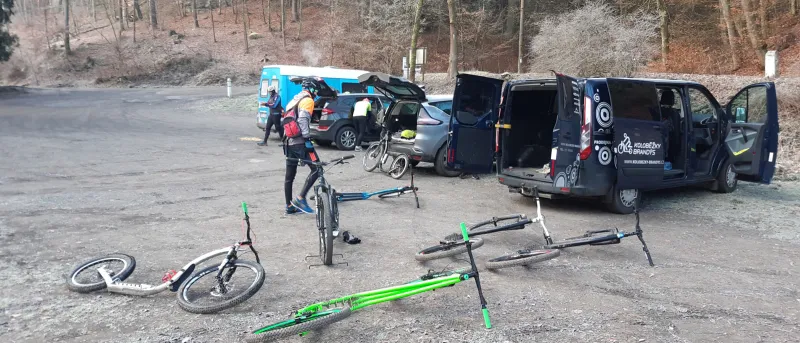
Offroad season
Sometimes an innocent decision comes along that later turns out to be quite significant. Something like that came at the beginning of 2020. We're going to start riding terrain as part of our winter training. We'll get off the frozen asphalt roads and start exploring the trails of the Kokořín region, which I've had my eye on for a while. The word is out and the exploration has begun.
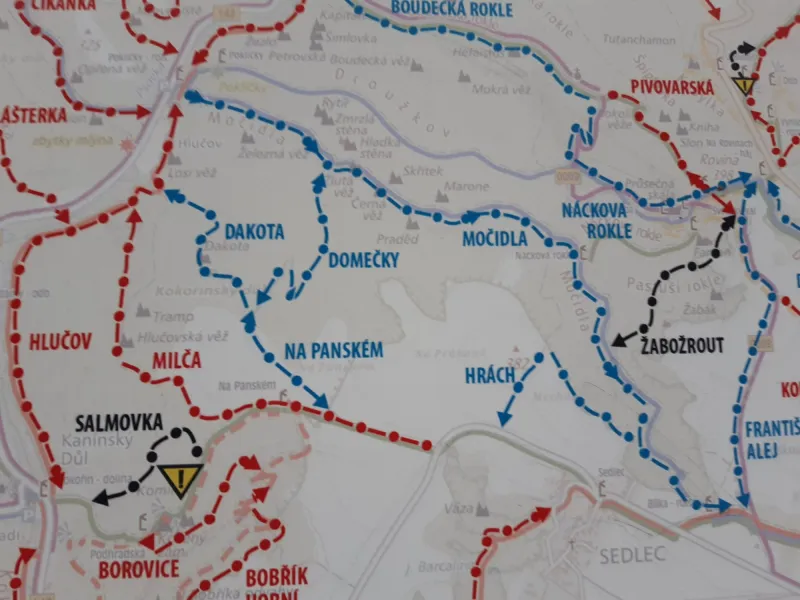
to jsme ještě netušili, co nás čeká
The first cowboy battle was to find what we were actually going to ride. We figured that out after about a month. Then we hit the trails. The trouble is that in deep woods and valleys with no signal, on trails that aren't on the maps, and on descents where you don't want to brake, finding the right trail allowed isn't easy. Especially when the roads at a fork go in a similar direction, or you have to swerve behind a rock, of which there are several, and not every turn leads somewhere.
All right, we have the routes. From previous trail rides with bikers on the suspension CrossMAX 20HD and CrossMAX Air, we know that it was hard to keep mostly flat. But that doesn't bother us in the scooter group, so we choose this concept. With quite a few of us riding in places, we also carry 29x26 Kickbike and Doxtor models. We rotate the scooters, rebuild them during the week and test them again in the field.
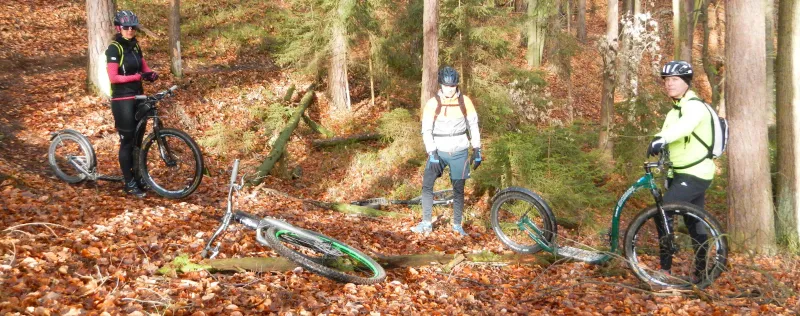
cestou necestou
Just as the Air was a reaction to cross-country racing and the lessons learned from the European championship, another of our premiere models - the Hellcat - was created through gradual testing. What emerged was a sporty-racing machine that can safely tackle tough descents, helps on the flat and is not heavy uphill. On the starting line were the already mentioned Kickbike Cross 29er, Doxtor F192, the already finished Kickbike CrossMAX Air, as well as the Kickbike CrossMAX 20HD and Kickbike CrossFIX. Not to be outdone, the Yedoo Alloy Trexx and, for fun, the Yedoo Numbers Five also passed the test.
But it was not only the scooter that we tuned to our image. Clothes, equipment, tactics. It's all evolved over the past 35 or so rides. And due to the postponement of the entire road season, we decided to take part in a cross-country cup, to test our knowledge in competition with others. So what did we come up with?
Clothing for offroad footbike:
Clear finger gloves. Twigs, pebbles, but also carrying the footbike or the necessary handling is much safer.
For races a classic jersey, however some forests have some crazy impenetrable mud that the jerseys are signed quite decently. For casual rides we opt for loose enduro shorts.
Sports socks are suitable. They don't have to be downright compression, it's all about protecting your shins and calves from twigs, pebbles and also nettles. Even mud build-up comes off better with socks.
Boots. Cross, running shoes with a pattern. But watch out for brisk tarmac crossings, the pattern disappears in a flash. Managed to get my hands on the Salomon S/LAB SPEED 2 cross trainers, which have a much more durable sole, rubber waterproof upper, and the thinner but all the more sturdy sample stones. They don't abrade on asphalt and their support on the ground is unmatched.

Equipment for offroad footbike:
Backpack - camelback. Better than a wire in the eye in a fall. In the backpack service equipment, snacks, vest.
Goggles - clear. Insects, but also flying mess from the rider in front of you, or from the front wheel, you don't want that in your eye on a technical fast descent.
Bottle basket. The bottle will definitely fall out. But the Marchan's have come up with a contraption in the form of a rubber bracelet pulled in front of the basket. It works with a 0.75-litre bidon. And for trips of around 3 hours, or a race, you need water. And it's not easy to climb into your pack every time. Water bag in the camelback ok, depends what else you can fit in then.

Offroad tactics:
Terrain cycling probably best describes the relationship between cycling and running in its name. There are few hills in terrain that make sense to ride. Crushing a hill where your shoes are slipping on the rocks or sand is like slapping a fish on dry land. It leads to nothing. What can still be done on tarmac is to roll next to the scooter when your foot slips. So somewhere around 6-7km/h we switch to running. Really big climbs are preferable to walking as well, or alternating between running and walking. When walking, it's a good idea to open your chest as much as possible, perhaps by hanging on to the handlebars and breathing deeply while bent over. It's about the only time it not only works, but works better for the next exercise.
Downhill is a lot more fun. Point and release. Big bikes can handle surprisingly large obstacles. Yes, it's scrubby in places, but with the right stance, the bottom of the scooter just lifts off and the tires grab again.
On the flat, on the flat, it's hell. The cyclist will go right off, shift into gear and it's gone. And so you poke and poke and poke. When there are roots and rocks, you practice to find out what you can and can't ride over. If not, every touch of the ground with your foot gives you a chance to bounce and jump over the obstacle or change direction nimbly. Stability is instantaneous thanks to your foot on the ground. The lighter the scooter, the longer you enjoy it.
Offroad footbike:
We know that we have evolved to a Hellcat on a Kickbike frame. What are its detailed parameters?
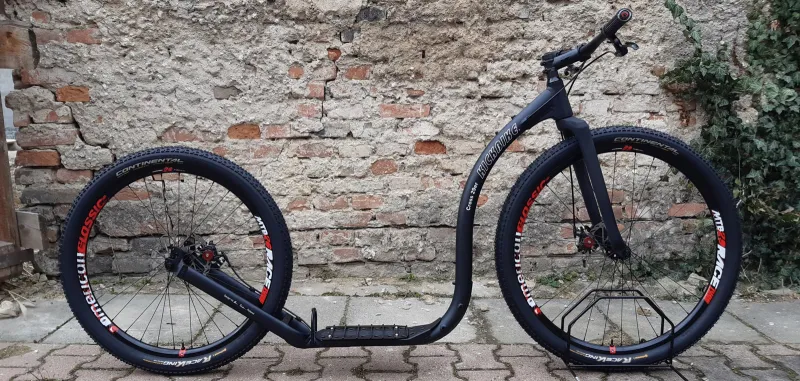
Cockpit
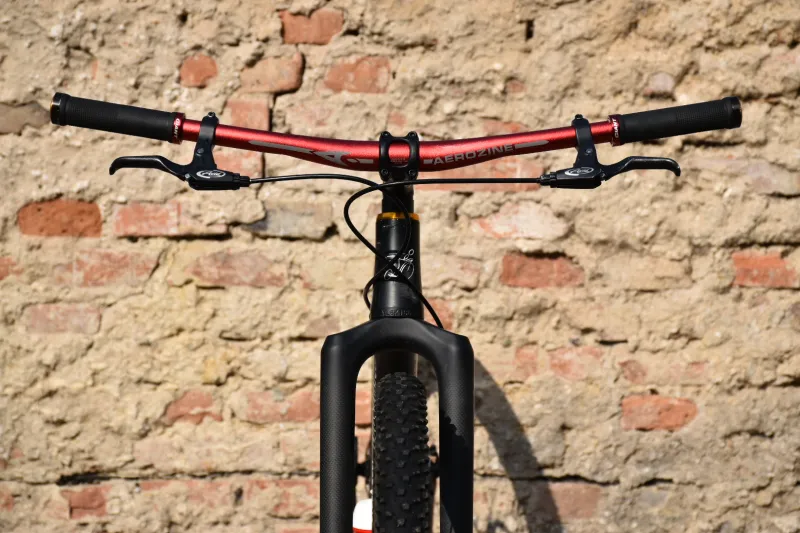
vlaštovky tvrdí muziku, ovladatelnost a stabilita na jedničku i v těch nejtěžších sjezdech
Řidítka vlaštovky, šířka minimálně 680mm.
Představec délky 100mm při 180cm výšce jezdce.
Gripy s pojistným kroužkem z pevné gumy. Za jednu jízdu dokáží ty bez kroužku celkem slušně cestovat. A pevná guma stačí, pohodlí dodávají široké pláště. Navíc stačí trochu bláta, a měkké gripy jsou na cáry.
Brzdové páky cca 2cm od gripů, na brzdění používáme jen ukazováčky. Zbytek prstů drží řidítka. Pokud ukazováčkem nedokážeme pohodlně brzdit, chce to lepší brzdy.
Rohy rozhodně ne. Jsou magnetem na větve a křoviska, navíc je potřeba mít ukazováky v pozoru na brzdách. Zbytečnost.
Wheels
Not much to go on, lightweight, aluminum, tubeless or galusk design. We usually choose the pattern a bit more for the ride, even the hard descents have been pretty comfortable so far, and on the flats it's at least a little bit off. So we're blowing from 1.6 bar to 2.2 bar. Milk, there's plenty of it, we're currently filling up with OKO Magic Milk with micro particles.
Frame, fork
Vidlici používáme originální karbonovou Kickbike, jiná totiž nepasuje, aniž by nezměnila světlost. Jezdíme na vyšší polohu nášlapu, v terénu to tak hrozné není, dobře se udržuje rychlost i na kořenatých cestách. Jen po asfaltu to není žádná lábuž. A samozřejmě GRILL. Bez něj už nyní ani ránu. Jistota ve sjezdech, stabilita po rovině.
Brakes
Jezdíme mechanické Avid BB7. Alternativou jsou třeba Shimano Deore, ale Avidy nám slouží zatím dobře celou sezonu, za mrazu, bláta, vody i sucha.
Po dojezdu
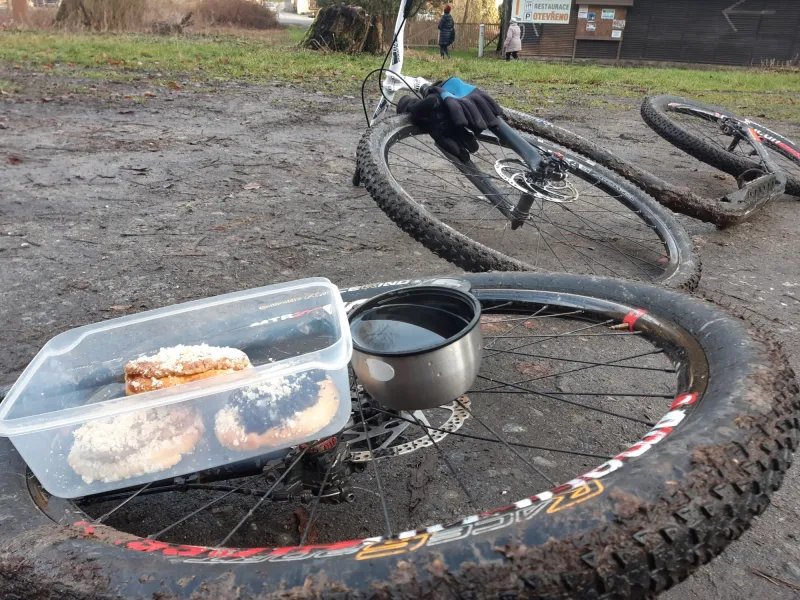
V rámci zimních návratů k autu jsme doladili i péči o sebe a koloběžku. Suché triko a ponožky, případně kompletně suché oblečení vám zachrání zdraví. Teplý čaj v termosce a koláč od přítelkyně nebo manželky doladí tu správnou náladu po tréninku v lese. A koloběžka?
Té jsme pořídili akumulátorovou nízkotlakou myčku, jedna nádrž na 5 koloběžek a baterie na 4 nádrže. Všechna nečistota se meje lépe ihned po dojezdu, kdy je vše ještě mokré. A doma stačí koloběžku jen vyložit.
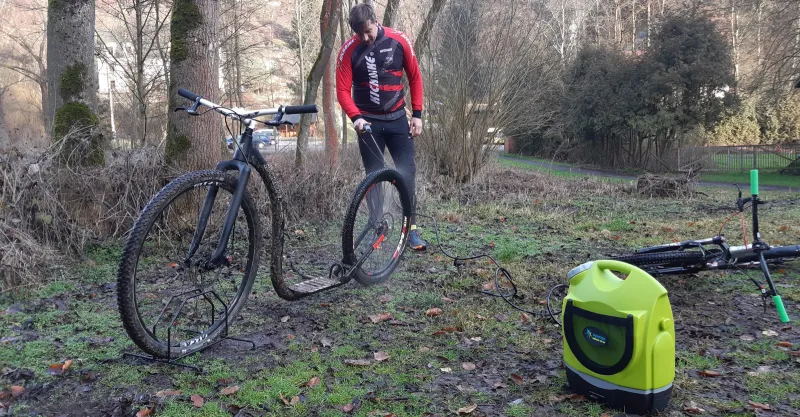
akumulátorová myčka v akci
Zpátky na začátek
Někdo někde tuhle napsal, že je po vývoji dobré zase zkusit to co bylo na začátku. Tak jsme vzali Airku a vyrazili na Kokořín. Ze začátku dobrý, zčerstva se ten rozdíl nepozná, ale po nějakých deseti kilometrech to začalo být utrpení. Dojezd výrazně menší, po rovině se člověk opravdu v tempu nesveze. Ve výsledku asi tak dvakrát víc odrazů a tak o třetinu náročnější samo o sobě.
Nicméně máme k dispozici asi 7 různých krosek na vyzkoušení, takže pokud má někdo chuť si tím projít, není problém.
